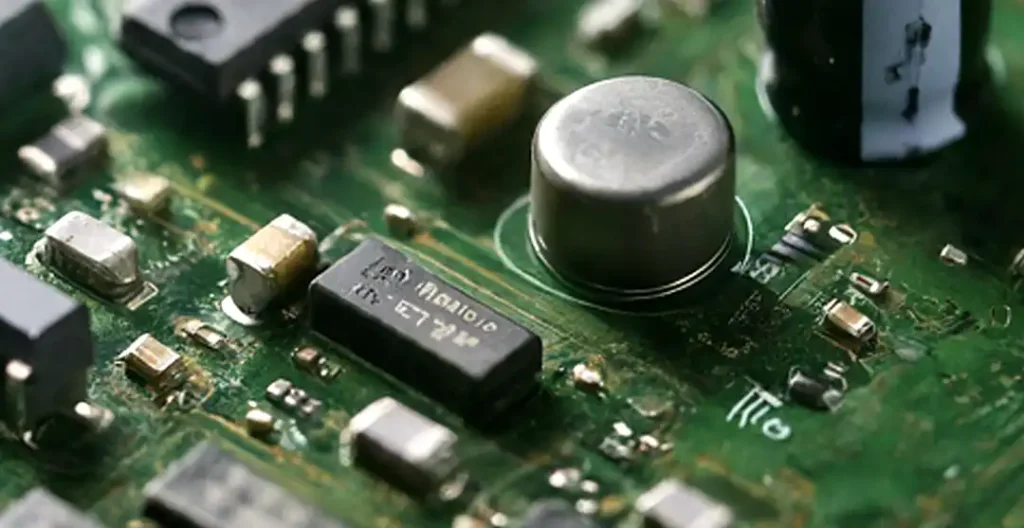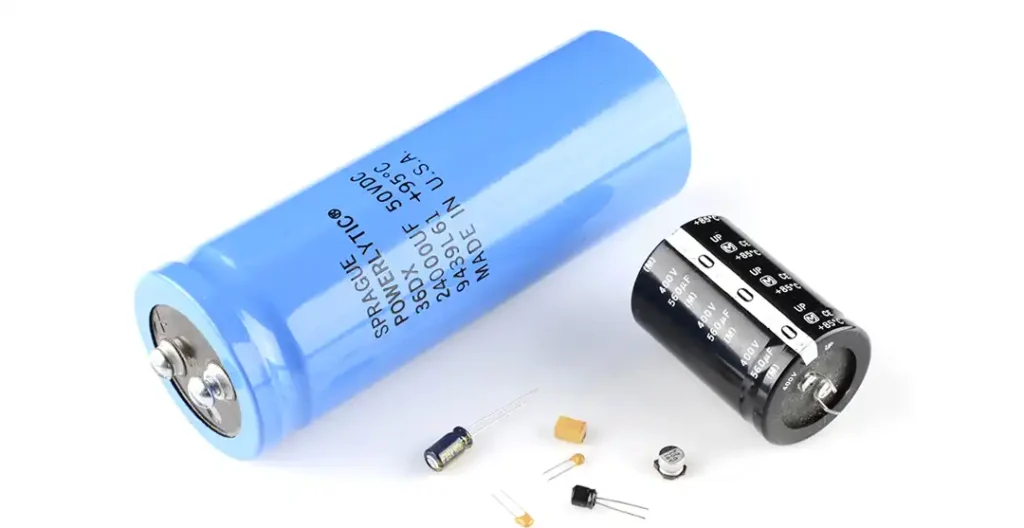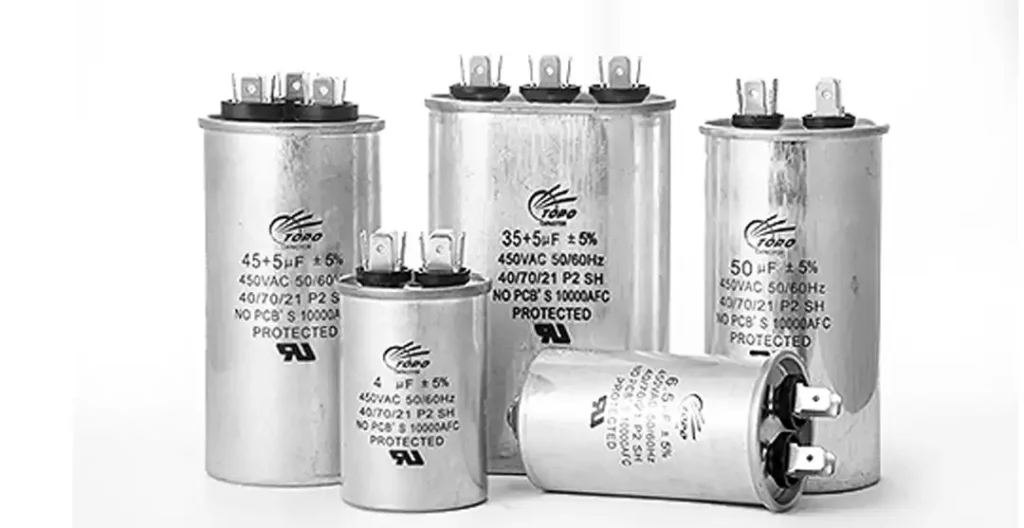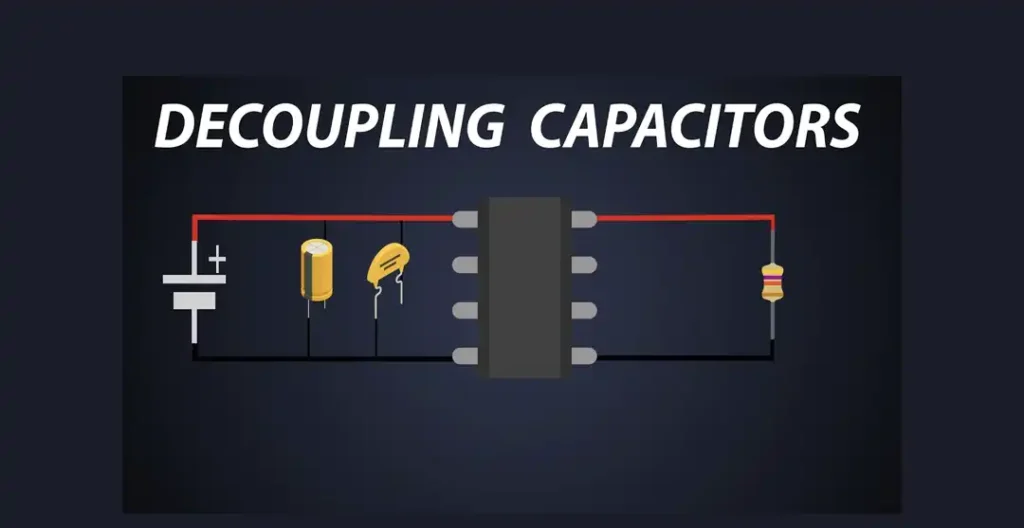Capacitors are fundamental components in electronic circuits, playing a crucial role in numerous devices we encounter daily. From smartphones to computers, capacitors are ubiquitous. Understanding the purpose of a capacitor is key to grasping its significance in electronics.
Let’s delve into the world of capacitors and unravel their purpose.
What Are Capacitors

Capacitors are passive electronic components designed to store and release electrical energy. They consist of two conductive plates separated by an insulating material known as a dielectric.
When voltage is applied across the plates, an electric field is created, leading to the accumulation of charge. This stored charge can then be discharged when needed.
Functions of Capacitors

Let’s delve deeper into each function of capacitors:
Energy Storage: Capacitors are like tiny reservoirs for electrical energy. When a voltage is applied across their terminals, they accumulate charge, storing energy in an electric field between their plates. This stored energy can be rapidly discharged when needed, making capacitors essential for applications requiring quick bursts of power, such as in camera flashes or defibrillators.
Filtering and Smoothing: In power supply circuits, capacitors act as filters, removing unwanted fluctuations and noise from the DC voltage output. They absorb and release charge to maintain a more consistent voltage level, ensuring stable and clean power for sensitive electronic devices like computers and audio equipment.
Coupling and Decoupling: Capacitors play a crucial role in transferring signals between different parts of a circuit while blocking unwanted DC components. They allow AC signals to pass through while blocking DC voltage, enabling efficient signal transmission without interference from DC bias. Decoupling capacitors also prevent voltage fluctuations in one part of the circuit from affecting others, enhancing overall circuit performance.
Timing and Oscillation: Capacitors, in combination with resistors, form the heart of timing circuits and oscillators. By charging and discharging at specific rates determined by their values and the connected resistors, capacitors control the frequency of oscillation in circuits like clocks, timers, and electronic musical instruments.
Voltage Regulation: In voltage regulator circuits, capacitors help stabilize and regulate the output voltage. They act as reservoirs of charge, supplying or absorbing current as needed to maintain a steady voltage level despite fluctuations in input voltage or load conditions. This ensures reliable operation of devices powered by regulated DC voltage, such as integrated circuits and microcontrollers.
Noise Reduction: Capacitors serve as effective filters for reducing electromagnetic interference (EMI) and radio frequency interference (RFI). By absorbing and dissipating high-frequency noise signals to ground, capacitors help maintain signal integrity and minimize disturbances in sensitive electronic systems like communication devices and medical equipment.
Motor Starting and Power Factor Correction: Capacitors are employed in motor starting circuits to provide an initial boost of current, helping motors overcome inertia and start smoothly. Additionally, in power systems with inductive loads like motors, capacitors are used for power factor correction, improving the efficiency of electrical distribution by balancing reactive power consumption and reducing energy losses.
These diverse functions highlight the versatility and importance of capacitors across a wide range of electronic applications, from power supplies to signal processing and beyond.
What is the Primary Purpose of the Run Capacitor

The primary purpose of a run capacitor is to assist in the continuous operation of electric motors, particularly in alternating current (AC) systems.
When an AC motor starts, it requires an extra surge of electrical current to overcome inertia and initiate rotation. However, once the motor is running, it operates more efficiently with a steady supply of power. Here’s where the run capacitor comes in: it helps optimize the motor’s performance during its continuous operation.
Specifically, the run capacitor helps improve the motor’s power factor and efficiency by creating a phase shift between the voltage and current in the motor winding. This phase shift helps to balance the reactive power in the motor circuit, reducing energy losses and improving overall motor performance.
What is the Primary Purpose of the Start Capacitor
The primary purpose of start capacitor is to provide the initial boost of power needed to start the motor in various electrical devices and appliances, particularly in single-phase electric motors. It helps in overcoming the resistance of the motor during startup by briefly storing and releasing electrical energy, thus assisting in the rapid rotation of the motor’s rotor.
Once the motor reaches its operating speed, the start capacitor is typically disconnected from the circuit. This function is crucial in ensuring efficient and reliable operation of equipment such as air conditioners, refrigerators, and pumps, among others.
Purpose of Decoupling Capacitor

The purpose of a decoupling capacitor is to stabilize the voltage supply to integrated circuits (ICs) or other sensitive components within an electronic circuit. It achieves this by filtering out high-frequency noise or voltage fluctuations that may occur on the power supply lines.
Decoupling capacitors act as local energy reservoirs, quickly supplying or absorbing electrical energy as needed to maintain a stable voltage level. This helps prevent disturbances or “ripples” in the power supply from affecting the performance or reliability of the circuit, ensuring proper functioning of the electronic device.
Purpose of Capacitor in Air Conditioner
The air conditioner capacitor purpose is to assist in the operation of the compressor and the fan motor. In an air conditioning system, capacitors are typically used in two main components: the compressor and the fan motor.
- Compressor: Capacitors help start and run the compressor motor efficiently. They provide the initial burst of electrical energy needed to get the compressor motor running, and they also help maintain a steady supply of power to keep the motor running smoothly.
- Fan Motor: Capacitors are also used in the fan motor to start and run the fan blades efficiently. Similar to the compressor, capacitors provide the necessary electrical boost to start the fan motor and help maintain its operation at the desired speed.
Purpose of a Capacitor in a Circuit
What is the purpose of a capacitor in a circuit?
The capacitor purpose in a circuit is to store and release electrical energy. Capacitors are passive electronic components that consist of two conductive plates separated by an insulating material known as a dielectric. When a voltage is applied across the plates, an electric field is created, causing positive and negative charges to accumulate on each plate.
Capacitors can store this electrical charge temporarily. They can then release this stored energy back into the circuit when needed, which can have various effects depending on the circuit configuration and the capacitor’s characteristics.
Some common purposes of capacitors in circuits include:
- Filtering: Capacitors can smooth out fluctuations in voltage by storing and releasing electrical energy, thereby acting as filters to remove noise or unwanted signals from the circuit.
- Timing: Capacitors, in conjunction with resistors, can create time delays or determine the timing of signals in electronic circuits, such as in timing circuits or oscillators.
- Coupling: Capacitors can couple or transfer AC (alternating current) signals while blocking DC (direct current) signals. This allows AC signals to pass through while isolating DC components, which is useful in amplifiers and other signal processing circuits.
- Decoupling: Capacitors can stabilize the voltage supply to integrated circuits by providing local energy storage and filtering out noise or voltage fluctuations from the power supply lines.
- Energy Storage: Capacitors can store energy temporarily, which is useful in applications such as backup power supplies, energy harvesting, and pulse circuits.
Purpose of Capacitor in Ceiling Fan
The purpose of a capacitor in a ceiling fan is to control the speed of the fan motor. Ceiling fans typically have multiple speed settings, and capacitors are used to adjust the fan speed by changing the electrical phase angle between the voltage and current supplied to the motor windings.
Ceiling fan motors are usually induction motors that require a phase difference between the voltage and current to generate torque and rotate. By varying the capacitance value, the phase angle can be adjusted, resulting in different motor speeds.
In essence, the capacitor acts as a component in the fan’s speed control mechanism, allowing users to set the desired speed level for comfortable air circulation in a room.
FAQs
What is the purpose of a capacitor in a circuit?
Capacitors serve multiple purposes in electronic circuits, including storing charge, filtering noise, and regulating voltage.
How does a capacitor store energy?
A capacitor stores energy by accumulating charge on its plates when a voltage is applied across them. This stored energy can be released when needed.
Can capacitors store DC (direct current) and AC (alternating current)?
Yes, capacitors can store both DC and AC, but they block DC while allowing AC to pass through, depending on the configuration of the circuit.
Why do capacitors come in different capacitance values?
Capacitors come in various capacitance values to suit different applications and voltage requirements. Higher capacitance values store more charge and vice versa.
What happens if a capacitor fails in a circuit?
If a capacitor fails, it can lead to circuit malfunctions, voltage spikes, or even damage to connected components. Regular inspection and maintenance are essential to prevent such issues.
Are there different types of capacitors?
Yes, there are various types of capacitors, including ceramic, electrolytic, tantalum, and film capacitors, each with its unique characteristics and applications.
Purpose of capacitor bank in substation In electrical substations, capacitor banks serve essential functions aimed at improving power quality and system performance. One primary purpose is power factor correction, where capacitor banks help balance reactive power consumption in the electrical grid. By reducing the reactive power demand, capacitor banks minimize energy losses, improve voltage regulation, and enhance overall system efficiency. Additionally, capacitor banks assist in voltage support, ensuring stable voltage levels during varying load conditions and voltage fluctuations. They also contribute to reducing line losses, optimizing energy transmission, and increasing the capacity of the electrical infrastructure. Overall, capacitor banks play a critical role in enhancing the reliability, efficiency, and resilience of electrical substations and power distribution networks.
Purpose of capacitor in air conditioner Capacitors are essential components in air conditioning systems, serving crucial roles in the operation of compressor and fan motors. The primary purpose of capacitors in air conditioners is to facilitate motor starting and running operations. Start capacitors provide the initial surge of electrical energy required to start the motors, ensuring smooth and reliable compressor and fan operation. Run capacitors then help optimize the performance of the motors during continuous operation by improving power factor and efficiency. Capacitors in air conditioners contribute to energy-efficient cooling, reduced power consumption, and enhanced overall system reliability. Additionally, they play a vital role in maintaining comfortable indoor environments and ensuring the effective operation of air conditioning units in residential, commercial, and industrial applications.
Conclusion:
Capacitors are indispensable components in modern electronics, fulfilling diverse functions that range from energy storage to signal processing. Understanding the purpose of a capacitor is essential for engineers and enthusiasts alike, as it provides insights into the inner workings of electronic devices. By harnessing the capabilities of capacitors, engineers can design more efficient and reliable electronic systems.